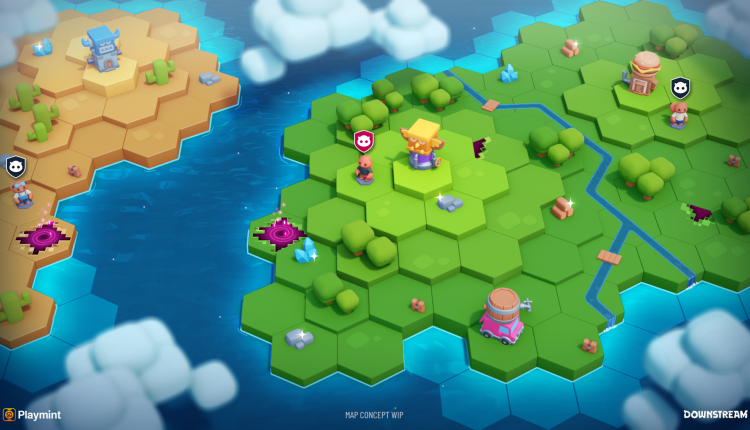Why Playmint is building fully onchain autonomous world Downstream

David Amor is CEO of UK web3 game developer Playmint.

Over my career I’ve worked on well over a hundred games across PC, console, handhelds and mobile. I love the fact that the games industry rarely stays the same for long. A venture capitalist friend recently told me that investors think about hedgehogs, who focus on one specific thing over their career, and foxes who’ll jump to whatever they think is interesting. I’m unashamedly in the latter category.
A little over two years ago we founded Playmint to build fully onchain games, which is the concept of a game whose logic, state and assets are all stored on a blockchain. Of the thousand or so web3 games being built about thirty of them are fully onchain and more than once I’ve been asked why I’d want to do that, since blockchains certainly weren’t designed to be game servers.
For the last year we’ve been working on fully onchain MMO Downstream, which has composability built into the game design. Specifically, it allows anyone to permissionlessly add smart contracts which allows the game functionality to be extended.
It’s a game that aspires to be an Autonomous World, which I think is the most interesting idea to reach the games industry in many years, but is largely overlooked save for a passionate group of onchain game builders.
To people outside of our bubble, I often get a cynical reaction when I put blockchain and games in the same sentence, but the onchain gaming community is one of devs using blockchain as a technology for decentralisation rather than a technology for powering crypto-flavoured capitalism. Decentralisation leads to a bunch of new possibilities for the games industry and to me, Autonomous Worlds is the most interesting one so far.
The onchain gaming community is one of devs using blockchain as a technology for decentralisation rather than a technology for powering crypto-flavoured capitalism.
David Amor, Playmint
Most digital worlds are owned and operated by the company that made them. An easy go-to example is Blizzard managing World of Warcraft, where they live-operate the game world, creating fresh content, running the servers, making adjustments, banning players, managing the economy etc. It’s the model we’ve come to expect. Blizzard are the admins of World of Warcraft. They’re the Gods.
The human world we live in uses a different model. If there is a God then it’s a God with a very light touch. All humans are bound by the same set of physics. What you can do as a human is influenced by social and economic factors rather than what a God or admin decides you can do. What you can do in our human world is limited by physics and social consensus.
It’s possible to create that same model digitally by using decentralised technologies. We’ve created an MMO that will live long after I’m dead because it lives on a blockchain rather than living on a server that requires us to pay a bill each month. It has “digital physics” that dictate what you can do in the world and those digital physics are immutable. So it’s a game world that lives forever where the rules can’t ever change.
People in that world (including us) can permissionlessly add code to extend the functionality of the game, which could be new quests, enemies to fight, clan systems, marketplaces, game features. Whatever is thought to be useful or interesting. As long as it adheres to the underlying digital physics then it will work.
If that sounds like mods, then a fundamental difference is that mods fracture the experience for players, i.e. different players end up with different experiences. An autonomous world has players introducing new experiences and functionality in a single, shared world. The world, like our human world, evolves as players add new things they want to see.
No need to pester Blizzard to add a feature to the game; no concern that the server will be switched off due to an expired licensing agreement; rules of the game set immutably in code; censorship managed ingame by social consensus.
That’s an autonomous world. Building it involves solving a lot of new technical and creative problems, and results are currently pretty lo-fi, but it opens the door to a new kind of game experience at a time when the games industry could use some new ideas.
Don’t miss out on any daily news from the blockchain games space: sign up to our Substack and follow us on Twitter.
